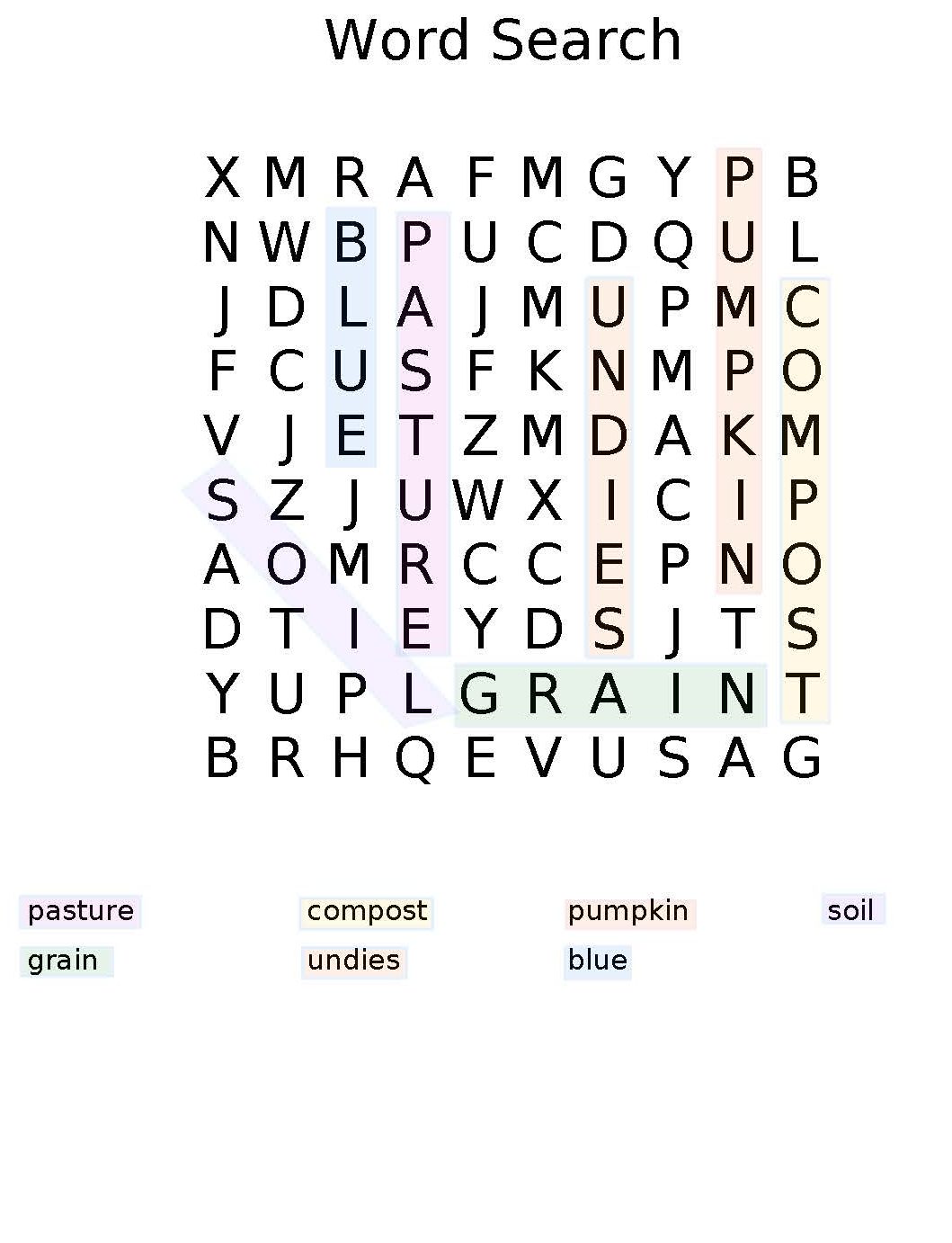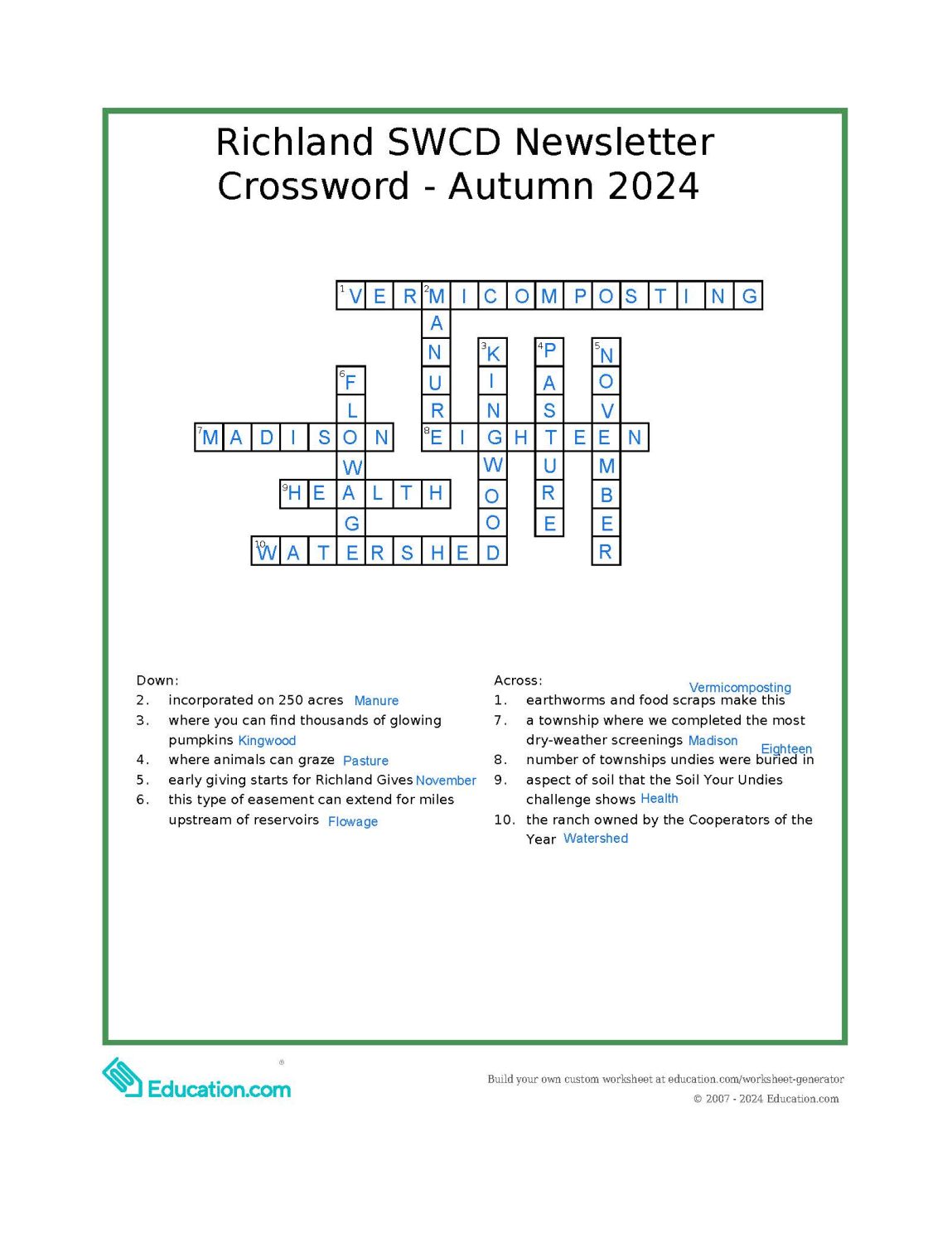Solutions for autumn 2024 and new winter puzzles!
News
Explore updates on our MS4 program including 2024 accomplishments and the new 2025 theme!
2024 was a busy year! We completed 12 dry weather screenings, finished all township garage facility inspections, conducted monthly inspections of active commercial projects, and hosted multiple outreach events.
2025 marks the final year of our current five-year National Pollution Discharge Elimination System (NPDES) Municipal Separate Storm Sewer System (MS4) permit term. We’ll submit our 2024 accomplishments in our Ohio Environmental Protection Agency (OEPA) annual report and apply for the 2026-2030 NPDES MS4 permit. With a new year comes a fresh start for our six Minimum Control Measures (MCMs) giving us the opportunity to tackle them all over again!
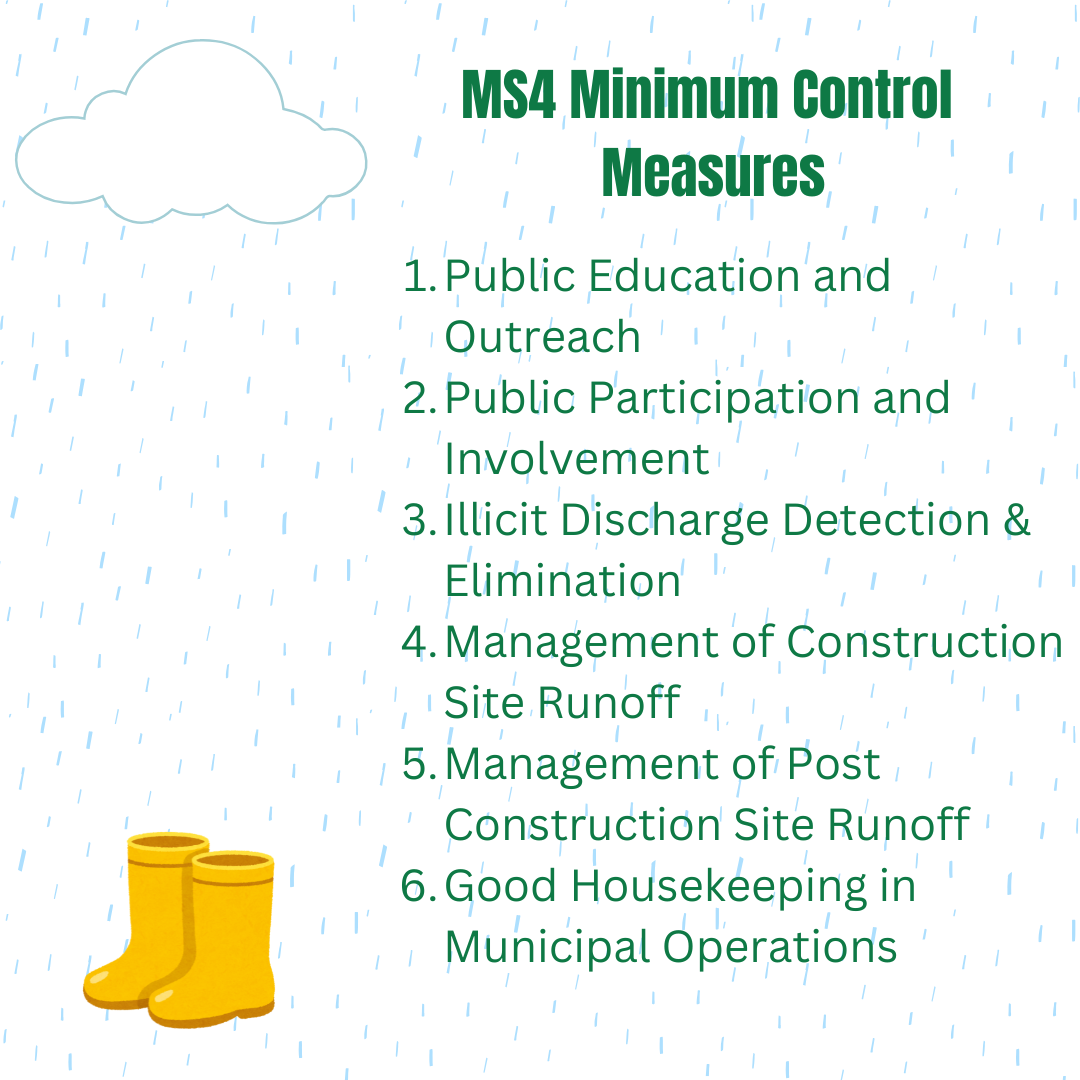
2025 also brings a new MS4 theme: Keep Dirt Where It Belongs. While this may seem like a simple concept, achieving it on an active construction site can be quite challenging. Erosion is a natural process, but construction activities can accelerate it. Although erosion cannot be entirely stopped, we can take steps to minimize its impacts and prevent man-made soil disturbance. One effective way to minimize erosion is by simply covering exposed soil. Planting native plants is ideal for erosion control as their deep roots anchor soil in place. Kentucky bluegrass is also commonly used in Ohio to stabilize a site after construction activities.
When colder months make seeding difficult, temporary stabilization techniques are crucial. The most common winter stabilization technique is mulching. Mulch not only covers bare soil, but it also promotes the germination of seeds in the growing season by holding moisture. This is why you often see straw thrown over grass seed! In Richland County, idle soil is to be temporarily or permanently stabilized after 14 days. Refer to the photo below for seasonal recommendations to stabilize soil effectively. For more details see Chapter 7 of the Rainwater and Land Development Manual. By implementing stabilization strategies, we can preserve soil integrity and support sustainable construction practices. Let’s keep dirt where it belongs!
There’s a lot in store for the 2025 MS4 program, so stay tuned and be sure to get involved! For more information keep an eye on our upcoming events!
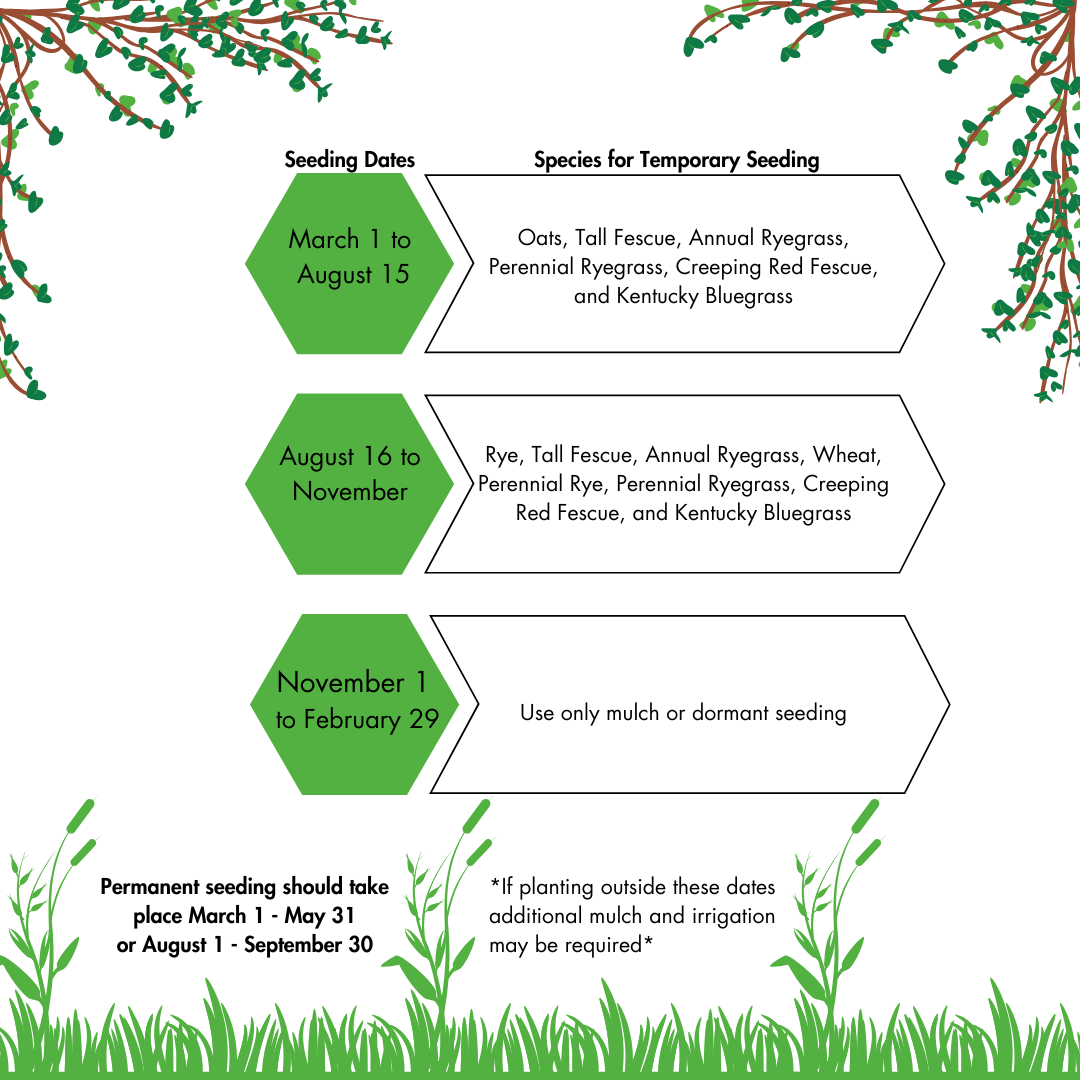

Our fourth and final quarter of the year has been a busy one for stormwater permits.
Our fourth and final quarter of 2024 was a busy one for stormwater permits. We issued 17 permits for commercial projects between October 1 and December 31. We also issued 65 residential permits during that period, with 44 of them being exemptions.
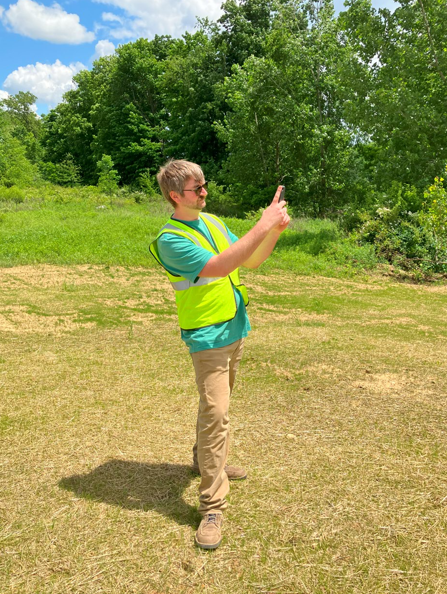

Learn about USDA-NRCS conservation programs. Sign up by January 31, 2025. Contact details and resources included!
The USDA-NRCS Environmental Quality Incentive Program and Conservation Stewardship Program for fiscal year 2025 sign-up deadline is January 31, 2025. For more information, please contact the Richland office at 419-747-8691 x 3 or the website at Conservation Stewardship Program – Ohio | Natural Resources Conservation Service. Feel free to check out Farmers.gov also. For email information, please contact Jason.ruhl@usda.gov or Jordan.miller@usda.gov .
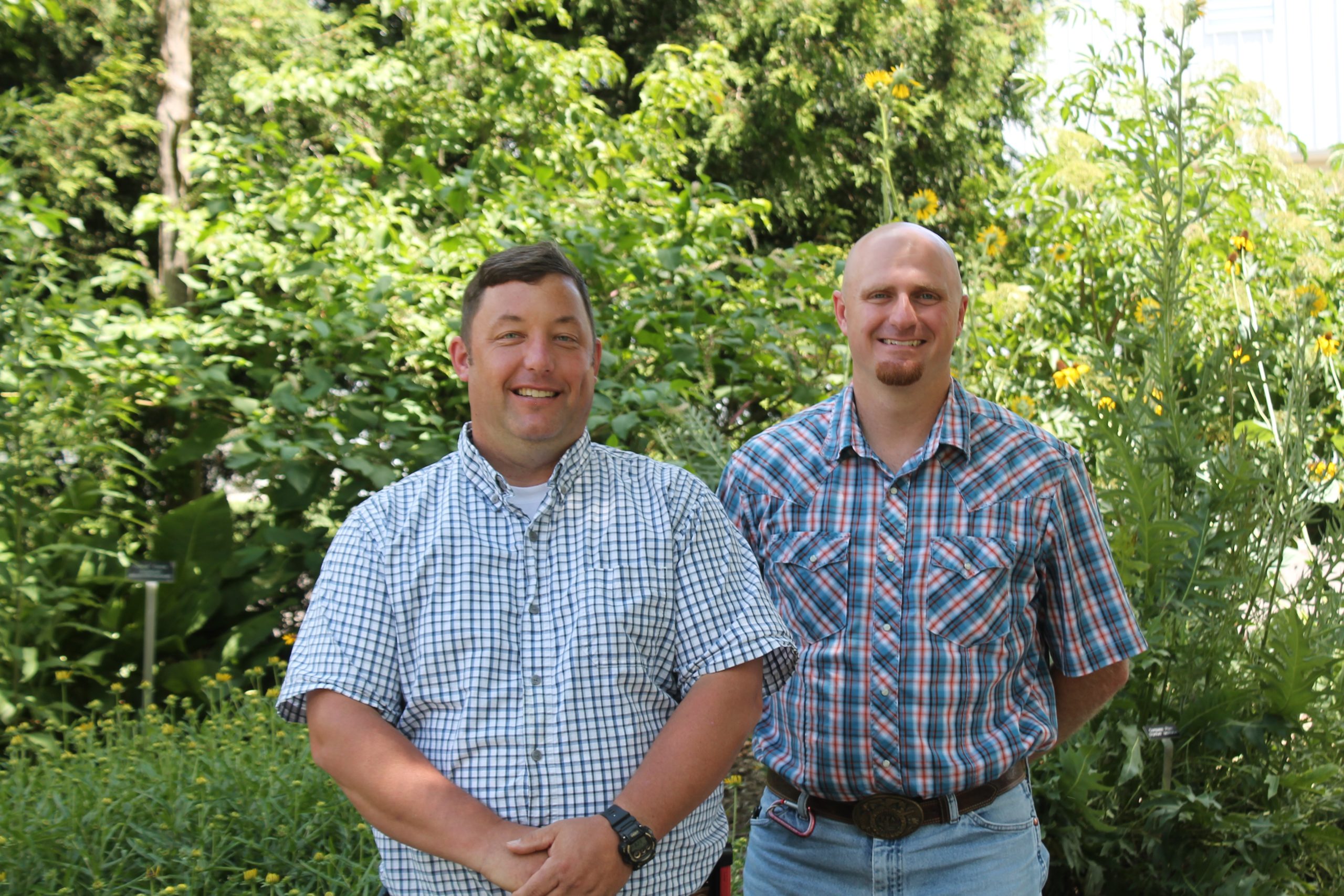
USDA-NRCS is An Equal Opportunity Provider, Employer, and Lender
Recently the U.S. Fish and Wildlife Service began petitioning for the Monarch Butterfly to be listed as a threatened species…
Recently, the U.S. Fish and Wildlife Service began petitioning for the monarch butterfly to be listed as a threatened species in the U.S and is seeking public input on the proposal. This inspired me to start a habitat series focused on grassland birds and pollinator habitat because good pollinator habitat is also good bird habitat!
Winter has arrived, which presents the perfect opportunity to discuss winter habitat and resource needs for pollinators. Some pollinators, like Monarch Butterflies, fly south for the winter, but many other stay home and hibernate. To survive the cold months, they need safe, undisturbed places to rest like stems of plants, leaf piles, or the ground. Providing these spaces when Ohio is blanketed by cold can make a big difference.
When planning your pollinator planting, it’s essential to plant species that bloom all throughout the growing season to ensure resources are readily available. For migrating species like Monarchs, late bloomers like asters and goldenrod are especially helpful as they prepare for their long journey. Hibernating pollinators need a place to nest and rest over winter. Resist the urge to tidy everything up in the fall! Many pollinators hibernate in hollow plant stems, under leaves, or in the soil. By leaving plants and seed heads standing, you’re giving pollinators a safe place to rest and providing food for birds in winter.
Pruning of perennials in gardens should be postponed until after winter and can occur in the start of spring. This allows overwintering pollinators to emerge safely when weather warms up. If you have a larger area like a meadow or prairie, try to mow only once a year and do it in late summer (July or August). This gives plants and pollinators enough time before winter to grow and supply cover, food for wildlife and hibernation locations for our pollinators. Mowing should not occur during the primary grassland bird nesting season (March 1 – July 15).
The key to pollinator habitat is mimicking wild landscapes. A clean, pristine garden does not mimic our natural landscapes where native pollinators and wildlife have co-evolved with the plants and ‘management’ on the landscape. By letting your yard or garden be more natural, you’re helping to recreate the environment they need to survive.
In summary, managing pollinator plantings for winter:
- If your pollinator habitat is grassland/ prairie: Strategically time your mowing and maintenance with a goal to have mowing completed by mid-August to ensure your stand has adequate cover through winter.
- Ensure your stand has species blooming in the last bloom window, these usually include asters and goldenrods and supply food/ fuel for migrating species and pollinators trying to store energy for the long winter hibernation.
- Keep the cover! Keep as much above ground cover available as possible, leave the stems, logs, leaf litter and rocks. If you are managing a smaller garden patch, avoid pruning until late winter/ early spring. *Keeping the seed heads on standing vegetation increases food availability for other wildlife, too!
Please do not hesitate to reach out with any habitat questions or comments!
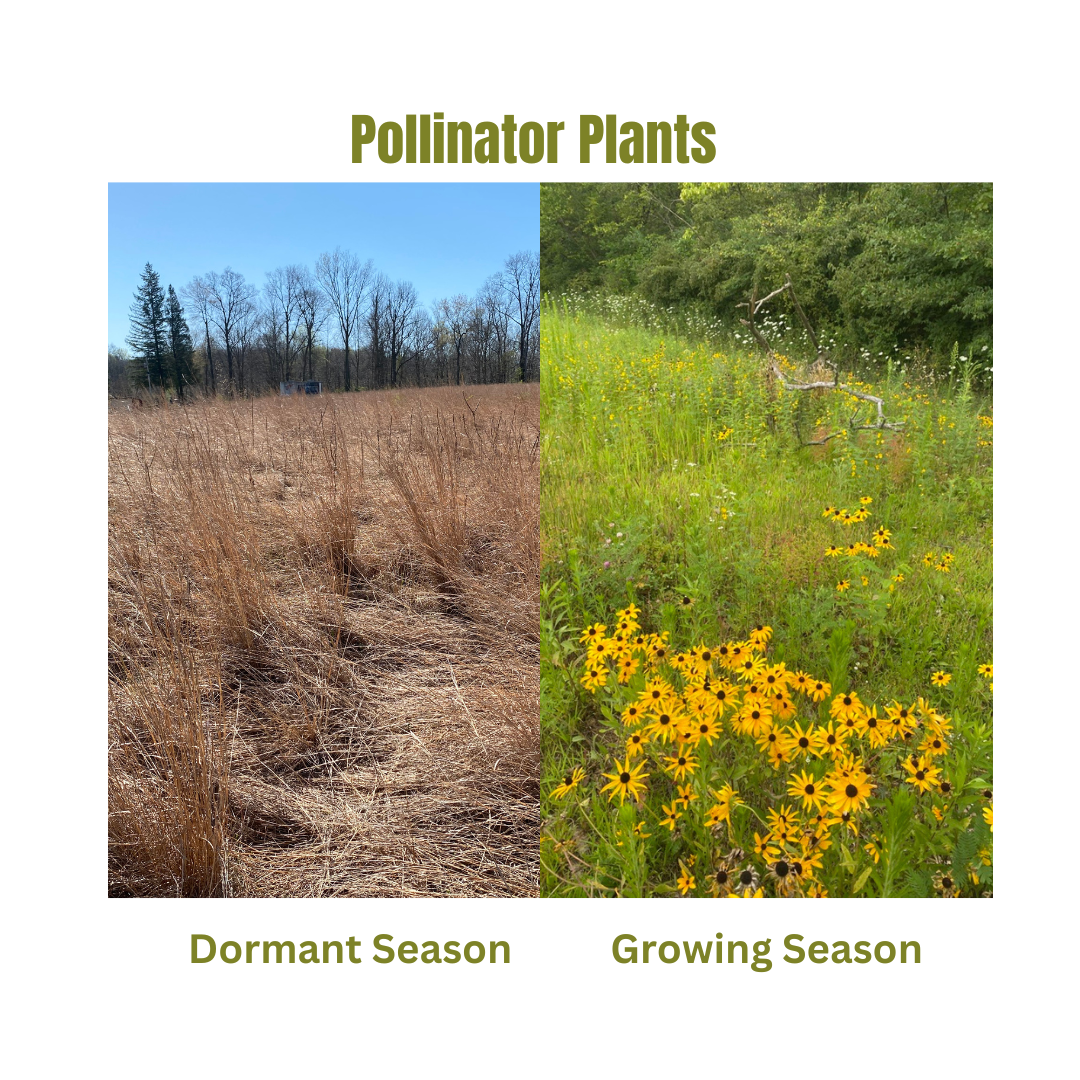
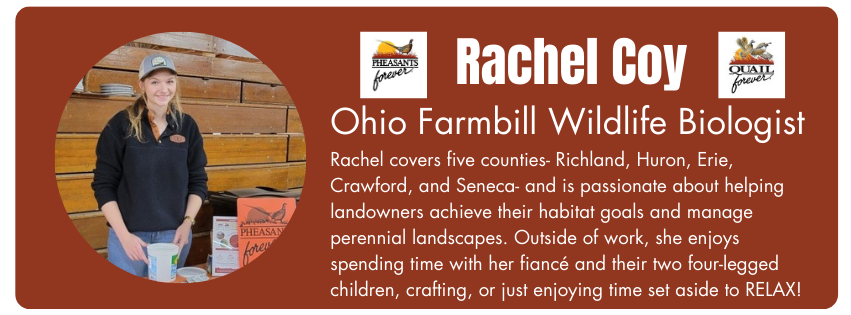
Richland Soil and Water Conservation District collaborated with the Richland County Farm Bureau to create three environmental and agricultural kits…
Richland Soil and Water Conservation District and the Richland County Farm Bureau donated three environmental and agricultural literacy kits for Richland County elementary schools and the Mansfield/Richland County Public Library. The kits provide a turnkey lesson plan for kindergarten through sixth-grade educators to instruct students about natural resources, food and agriculture. The kits include children’s books, lesson plans and items needed for an activity. A total of 75 kits were distributed throughout the county in December and this month.
Volunteers Candy Brenner, Ella Hafenstein, Robert Donaldson, and Marilyn Roe, in addition to Richland County Farm Bureau volunteers helped assemble the kits and delivered them to schools.
Individuals, homeschoolers, homeschool groups, scout troops, 4-H clubs and church groups are invited to check out the kits through the MRCPL. Financial support for the Cultivating Minds Project was provided by the Richland County Foundation Gift of Grain Fund, Richland County Youth and Family Council, private donations, and MRCPL.
A private RSWCD donor assembled and funded an additional kit that simulates stream monitoring in an indoor setting. “Water Quality? Ask the Bugs” is a Project Wet lesson for middle and high school students. It may be checked out through MRCPL.
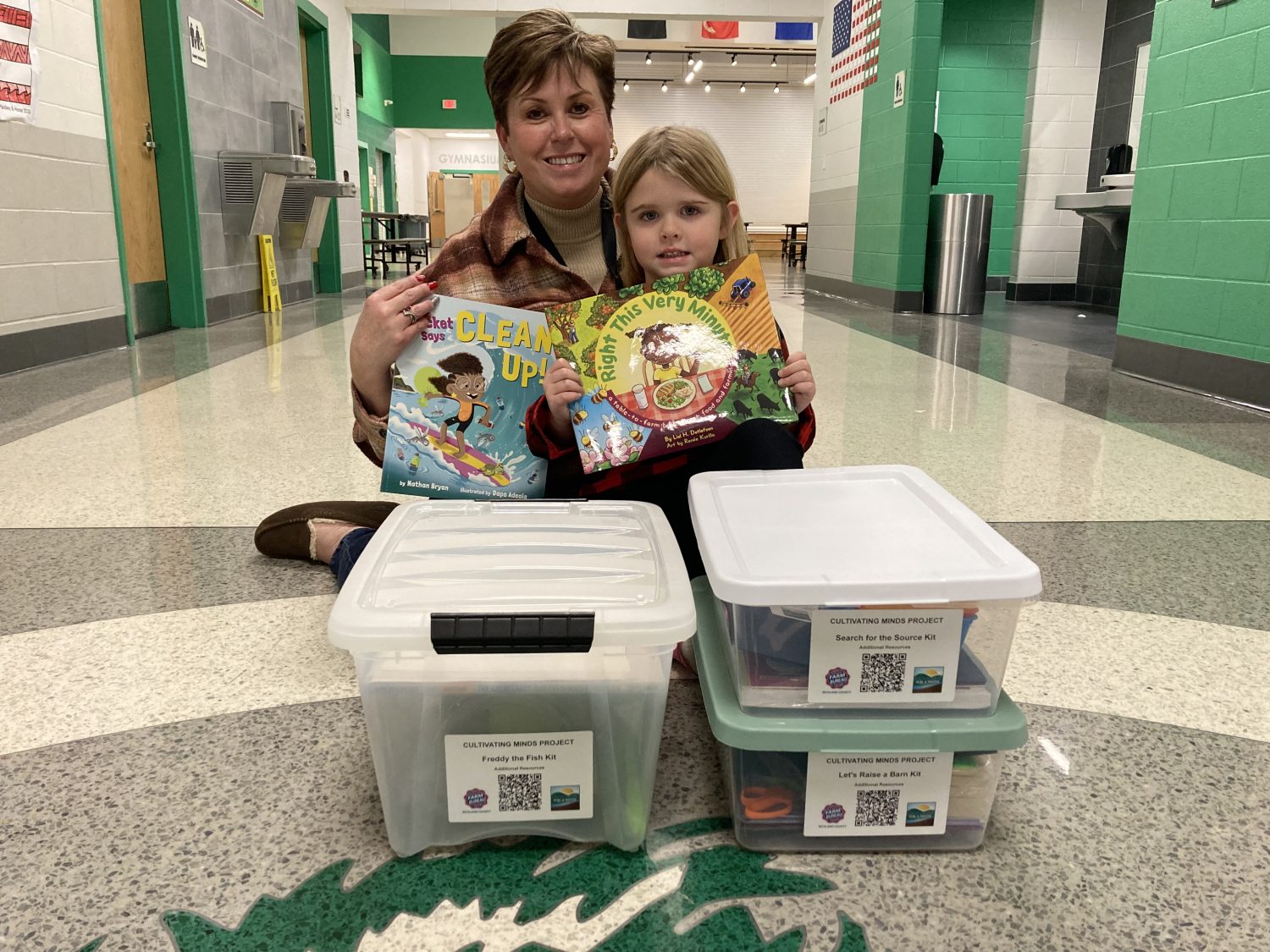
Kit Titles and Descriptions are provided below:
Freddy the Fish: K – 6 grades
Participants listen to the story of Freddy the Fish. He decides to travel downstream and witnesses pollution being dumped into his environment. Students are asked how Freddy feels as more pollution is added and come to realize that pollution can add up and impact our environment. Depending on the age of the participants, they can read the story and/or pour the pollutants in the fishbowl to add additional interaction.
Let’s Raise a Barn: 3 – 5 grades
Participants listen to Barn at Night, a book about an after-dark journey out to the barn on a cold winter evening. The students learn about different types of barns and design a barn to meet the needs of a specific farm animal.
Search for the Source: K – 2 and 3 – 5 grades
Participants listen to Right This Very Minute, a table-to-farm book about food and farming. The instructor engages students in discussion about everyday items. Relay teams fill the Source Baskets with pictures of items and discuss the true source of the items.
For additional information, please contact Theresa. We also welcome discussions focused on other opportunities to work with young people.

Make sure you’re meeting H2Ohio deadlines!
H2Ohio Reminders
We’ve met with all of our current participants in the H2Ohio program and have been gathering the necessary information to verify crop year 2024 practices.
- 2024 Nutrient Management Documentation: If you have any outstanding documentation needed to complete crop year 2024 nutrient management, please get it to us as soon as possible.
- DEADLINE: January 31 – Last day to turn in information for 2024 Cover Crops/2024 Small Grain maps/locations: We have set a strict deadline for gathering cover crop and small grain establishment locations – January 31, 2025. Please provide us with planting maps or field names/locations by this date. This includes new producers to the program for crop year 2025 who planted overwintering cover crops by November 1, 2024.
- DEADLINE: March 15 – 2024 Cover crop, 2024 Small Grains, and 2024 Forage documents: March 15, 2025 is the last day to turn in 2024 cover crop/2024 forage seed tags, bills, tests, and/or total weight, and double crop seed bills (if you planted a double crop behind your 2024 small grains).
Practice Specific Reminders
Cover Crops
- Cover crops must be maintained until March 15. No fall or winter full-width tillage is permitted.
- Strip-till and tilling are allowed, but producers may not work-down tile lines until after March 15.
- Crop can be harvested as a forage or grazed after March 15.
- Manure and/or fertilizer, based on voluntary nutrient management plans (VNMP) can resume after March 15.
Small Grains
- No full-width tillage or any Phosphorus-containing fertilizer and/or manure applications are allowed after the cover crop is planted or the double crop is harvested or until March 15. Exceptions apply for tile work and strip tillage fertilizer placement.
Forage Requirements
- Forage fields shall be maintained until March 15. This means no full-width tillage and no Phosphorus-containing fertilizer and/or manure applications during this period. Exceptions apply for tile work and strip tillage fertilizer placement.
- Payment will not be made if the overwintering forage residue is too close cut. The standard says that residue must be a minimum of 4 inches tall by October 15 each year.
- Payments for forages are to be made in the spring of the year following establishment and every spring it’s enrolled as a forage thereafter.
Soil Tests for Nutrient Management
- Soil tests cannot be older than 4 years. If you are not on a regular schedule, please make sure that you check which fields require updated soil tests this fall.
**As an H2Ohio participant, you are responsible for following the standards/guidelines for the above practices. If you need additional copies of the practice standards, we are happy to supply them. **

Wish Evan well and welcome our newest intern!
Evan joined Richland SWCD in June of 2021 and quickly became an invaluable part of our team. Wearing many hats, he worked with H2Ohio producers, helped with stormwater permitting, crafted our newsletter, and brought Our Rich Land podcast to life. His commitment and creativity knew no bounds. One of Evan’s favorite parts of his role was connecting with H2Ohio producers and supporting them in every way he could. His passion for making a difference was evident in all he did.
As Evan embarks on a new chapter as Project Coordinator for Philander Chase Conservancy, we feel a mix of pride and bittersweet emotions. We will miss his humor, dedication, organization and the energy he brought to the office every day. Thank you, Evan, for the past three years of hard work and for leaving an unforgettable mark on Richland SWCD. We wish you all the best in this exciting new adventure!
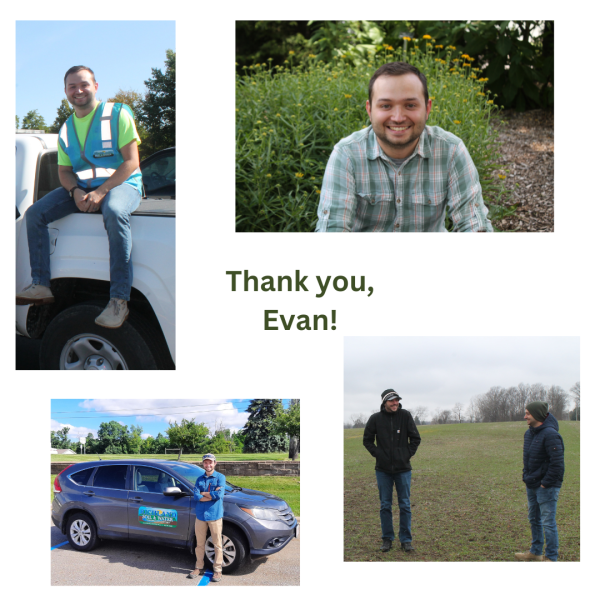
We’re excited to welcome Kayla Mitchell, our new marketing intern, to the team! Kayla is a student at Bowling Green State University where she is majoring in communication and minoring in journalism. She’ll be assisting us with graphic design, social media, promoting our programs to the community, and more. We’re thrilled to have her onboard and can’t wait to see the creative ideas she brings to the table! Although she’s working remotely, we hope you’ll join us in giving her a warm virtual welcome!
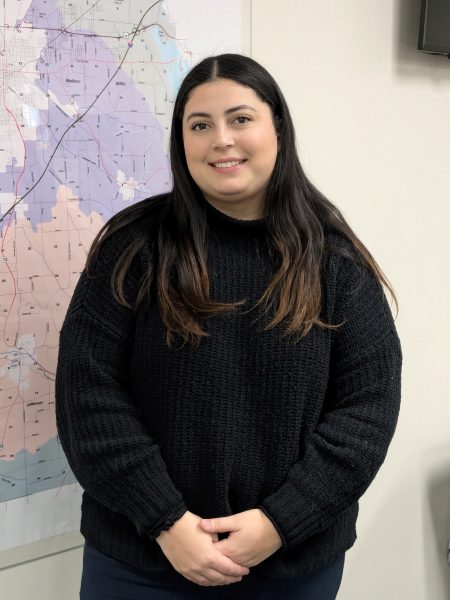

This year’s county fair brought an unexpected highlight – dirty underwear from across Richland County! As part of the Soil Your Undies challenge, our team buried a pair of 100% cotton underwear underground for 60 days in each of the 18 townships to showcase soil health. Rich soil teeming with microbes…

Credit: Richland SWCD
Dirty Undies!
This year’s county fair brought an unexpected highlight – dirty underwear from across Richland County! As part of the Soil Your Undies challenge, our team buried a pair of 100% cotton underwear underground for 60 days in each of the 18 townships to showcase soil health.
Rich soil teeming with microbes and worms will break down the fabric quickly, while less active soils will show little change. The healthier the soil, the faster the cotton underwear decomposes providing a fun and visual way to assess the vitality of local soils.
Our Underwear on Display…
One common joke among visitors after seeing the display was that Richland County should be called “Rich Land County” due to the thriving soils in some townships. Many visitors had questions about replicating the experiment in their backyard and we were able to give them our extra pairs of undies
Our display quickly became a hit at the fair, sparking curiosity among visitors of all ages. Fairgoers were amazed to see the varying levels of underwear decomposition and how it correlated with the land’s use.

After the two-month burial period, we retrieved the undies and put them on display at the county fair. The results ranged from pairs that were barely recognizable to those with minimal decay. This visual showcase highlighted the differences in soil health across the county.
A Lesson in Soil Health
This experiment was more than just entertaining – it reminded us of the importance of maintaining healthy soil. Local farmers especially took note of how soil health can affect crop yield, water retention, and sustainability. Sites where the underwear remained mostly intact now have a clear opportunity to investigate practices that could improve their soil health like adding compost or using cover crops.
Overall, the Soil Your Undies experiment was a great success. The positive reception at the fair showed just how eager our community is to learn about environmental stewardship. Richland County is ready to prove that it’s not just rich in history, but rich in land too.
We want to extend a big thank you to the landowners who allowed us to bury underwear on their properties! This project wouldn’t have been possible without their generosity, curiosity, and support.

On September 26th the Richland Soil & Water Conservation District held its Annual Celebration at the Hawkins Center in Ontario (at the Area Agency on Aging). Our Annual Celebration has historically been held in the evenings, but this was the first time it was held as a luncheon. It was a wonderful, event-packed time…
Annual meetings or celebrations are where Soil & Water Conservation Districts (SWCDs) share accomplishments, provide updates, recognize hard work, and meet the community. Additionally, annual meetings offer a time and space to hold elections for the Board of Supervisors that oversees the Districts.
On September 26th the Richland Soil & Water Conservation District held its Annual Celebration at the Hawkins Center in Ontario (at the Area Agency on Aging). Our Annual Celebration has historically been held in the evenings, but this was the first time it was held as a luncheon. It was a wonderful, event-packed time.



Staff Accomplishments
Our staff started the afternoon by updating attendees on our various programs and all the hard work they did this past year. Programs covered included: the volunteer program; the Stormwater Permit program; the MS4/NPDES permit; agriculture pollution abatement; H2Ohio; Farmland Preservation, and more.



Cooperator of the Year
We also recognize a Cooperator of the Year every year: an individual, group of individuals, or entity who exhibits exceptional conservation in the County. Neil and Pam McKown of Watershed Ranch were recognized as the 2024 Richland SWCD Cooperator of the Year. Since the McKowns bought their farm they have transformed it into a paradise by implementing many conservation practices.



Volunteer of the Year
In addition to a Cooperator of the Year, we recognize a Volunteer of the Year. Bob Donaldson of Mansfield received the award this year. Bob is one of our rain gauge monitors, but he also made a big difference this past year by sharing his Microsoft Excel expertise with us. By doing so he helped us improve and update many of our organizational spreadsheets. Our workflows and data-capturing are now more efficient and organized thanks to Bob! As a “thank you” for his contribution, a Black Gum tree was planted in his honor in Centennial Park, Lexington.



Supervisor Election and a Thank You to Lanny Hopkins
This year’s supervisor election featured two open seats. Existing Board member, Lanny Hopkins, decided not to run for reelection while existing member, Jean McClintock, ran for reelection. Pam McKown ran for the other vacant seat. After tallying the votes, Jean was reelected and Pam McKown was elected to her first term. Terms run for 3 years and begin in January.
Lanny Hopkins has served on the board since 2018, serving two terms, and has decided to step down. Lanny was most passionate about Black Fork clean-up/log jam removal and continues to work on the initiative. He was presented with a service award as a small token of our appreciation.
If you attended our Annual Celebration, thank you so much! If not, maybe we will see you there next year!

The Pastures for Profit Grazing School classroom sessions were held on the evenings of July 23rd and 25th with a pasture walk day on July 27th. Pastures for Profit is an educational course providing science-based pasture management…
The Pastures for Profit Grazing School classroom sessions were held on the evenings of July 23rd and 25th with a pasture walk day on July 27th.
Pastures for Profit is an educational course providing science-based pasture management information to Ohio farmers. Throughout the course, participants learn how to provide and maintain healthy and sustainable forage systems for the animals in their care. Participants of our grazing school learned about goal setting, soils, soil fertility, plant physiology, animal needs, paddock design, fencing options, extending the grazing season, and the economics of grazing operations.
Thank you again to Randy & Eileen Eisenhauer for allowing us to use their pastures to educate the participants! The pasture walk day was a hot one, but that didn’t stop farmers from asking great questions and prompting great discussions! Thank you to all our participants and presenters for making this a great event! We all profited from the conversations and knowledge shared.
Pastures for Profit was a combined effort of the following entities: The Ohio State University, the Ohio Department of Agriculture, USDA-NRCS, and the Ohio Forage & Grasslands Council.




On August 8, we presented information on Richland County’s stormwater permitting process during a Lunch & Learn hosted by the Mansfield Association of Realtors. The purpose of the Lunch & Learn…

On August 8, we presented information on Richland County’s stormwater permitting process during a Lunch & Learn hosted by the Mansfield Association of Realtors. The purpose of the Lunch & Learn was to educate local realtors on the intricacies of permitting in the county so that they may better assist their clients.
Also presenting was US Army Corps of Engineers Realty Specialist Eric Dowing who provided participants information on the Army Corps’ flowage easements. According to the Army Corp, flowage easements are non-federal lands where the U.S. Government has acquired rights to back up water if necessary (to a certain elevation).
Flowage easements exist in Richland County and stretch for miles upstream from the Charles Mill and Pleasant Hill Dams. Knowledge of flowage easements is critical because land use within the easement is heavily restricted. Thank you to the Mansfield Association of Realtors for hosting the event and allowing us to speak with their members about permitting in Richland County!

Don’t miss these special announcements and reminders for Autumn, 2024!

Grant to Help Cultivate Young Minds in Richland County
The Richland County Foundation Gift of Grain Fund Committee has awarded a grant to support Richland SWCD. The grant will fund a collaborative project called Cultivating Minds that brings together Richland SWCD, Richland County Farm Bureau, and the Mansfield Richland County Public Library. It will provide three agricultural and environmental literacy kits to every elementary school in Richland County and at the Mansfield-Richland County Public Library’s main branch.
The goal is to teach elementary youth about agriculture, food, and natural resources. The agricultural kits include a children’s book, a teacher’s guide, and all items needed for a classroom activity. A total of 75 kits will be distributed throughout the county. Many thanks to the Richland County Foundation for making this possible!

It’s Easy to Support Us With Richland Gives
Richland Soil and Water Conservation District (Richland SWCD) has served Richland County landowners since 1948—that’s 76 years! However, we have not made it this far without help.
Richland Gives is a local online giving campaign held once a year. It encourages people to contribute to local non-profits. The Richland County Foundation hosts this campaign to grow philanthropy and strengthen the community.
Thanks to generous, past donors, Richland SWCD has benefited from Richland Gives. We have turned some donations into grants for soil testing, rain barrels, and native seeds and plants. Donors like you can help us continue to provide a wide range of services – both technical and educational – to the residents of Richland County and conserve our natural resources.
For more information, see the infographic or click the link below to the Richland Foundation. To give to Richland SWCD through the Richland Gives website, click on the GIVE link.

Why are we so blue?, Stormwater Permit numbers, and MS4 happenings.

Why Are We So Blue?
We recently traded our old, yellow, high-visibility vests for new blue ones with our logo! These vests will help keep us safe and stand out when we do stormwater inspections or other fieldwork.
Our Stormwater Technicians regularly inspect permitted projects, visiting projects in all 18 townships about once every other month. They also inspect storm sewer outfalls.
If you see the blue vest, know that Richland Soil & Water is hard at work!

Busy With Stormwater Permitting
This quarter, our office issued 87 residential permits (this includes all residential & agricultural permits, fee exemptions, and permit exemptions), up from 66 last quarter.
We also issued 6 commercial permits. We’re as busy as ever.
Richland Soil & Water Conservation District (Richland SWCD) manages Richland County’s Stormwater Management and Sediment Control Regulations. For more info, click on the link below.

Successful Screenings – MS4/NPDES Update
This quarter we focused on conducting dry weather screening of stormwater outfalls in Madison Township as part of our ongoing MS4 efforts. We successfully screened 4 outfalls for signs of illicit discharge or pollution.
These screenings are an essential part of our work to ensure stormwater runoff remains clean and free from harmful pollutants. We only have 6 more dry weather screenings to complete this permit term!

The MS4/NPDES permit is a crucial regulatory measure designed to manage and reduce pollution from stormwater runoff in urbanized areas. For more information, click on the links below.
H2Ohio’s Impact, Why Grassed Waterways?, and Field Work
H2Ohio Wraps Up for 2023 Program Year
In H2Ohio, verifications for one year of the program don’t wrap up until halfway through the next. That is why we are sharing 2023’s impact instead of 2024’s.
The Ohio Department of Agriculture designated over $2.7 million for Richland County farmers in H2Ohio. 2023 appropriated cost share alone totaled nearly $700,000.
Our participating farmers worked hard in 2023 as you can see from the impact infographics below.








Overall, H2Ohio farmers received north of $320,000 in cost share last year. The total cost share paid to date totals over $700,000.
As we look ahead to the coming years we are excited to announce that 11 new producers were signed up for H2Ohio this year! This brings the total cropland acres enrolled through Richland County to 25,500, the most we have had since the program began!
All numbers are approximate
For more information on H2Ohio, visit these links!

Agriculture Best Management Practice Highlight: Grassed Waterways
Ever pass a farm field and wonder why a seemingly random strip of grass runs through the middle of it? Chances are, you are looking at a grassed waterway.
When a whole field is tilled and planted, there may be areas where two hill slopes come together (called a swale). When it rains, water will naturally flow to these swales and eventually to a stream or creek.
In conventional cropping and tillage systems, these areas can erode into gullies and are difficult or impossible to cross with farm equipment. Furthermore, they will continue to erode as water carries the soil away.
Grassed waterways are engineered, shallow grassed channels designed to handle concentrated water flows. The grass slows water down so it is less likely to carve gullies and the grass’s roots help keep the soil in place.
If you think your field could benefit from a grassed waterway or two, we can help. Give our office a call at 419-747-8686.

Seeing Conservation in Action
Over the spring/summer, Richland SWCD technicians helped our USDA-NRCS partners by performing practice check-outs. In other words, these practices were completed and needed to be verified that they were done correctly. As a result, our technicians saw some conservation practices in action!
Technicians verified 7 acres of Grassed Waterways, 4 acres of Quail Buffer, 5 acres of Hardwood Tree Planting, and 25 acres of Tall Grass Prairie. The practices our technicians verified encompass nearly 40 acres and are helping to reduce soil erosion and promote wildlife habitat and diversity.
The United States Department of Agriculture’s Natural Resource Conservation Service (USDA-NRCS) offers and administers a wide variety of voluntary, cost-shared conservation practices for farmers to implement on their land and homestead.
Richland SWCD technicians assist USDA-NRCS with technical assistance and administrative efforts and are available to help producers interested in programs and practices offered in Richland County. Our technicians also assist those who do not wish to be enrolled in government programs but want to implement conservation practices.
Has your farm been in your family for more than a century? Would you like to preserve and honor that history? If so, Ohio’s Historic Family Farm Program might be a good choice…

Ohio’s Historic Family Farm Program
Has your farm been in your family for more than a century? Would you like to preserve and honor that history? If so, Ohio’s Historic Family Farm Program might be a good choice.
There are three designations for historic farms in Ohio: Century Farms (in the family for 100-146 years), Sesquicentennial Farms (in the family for 150-199 years), and Bicentennial Farms (200+ years in the family).
For more information, you can call the Ohio Department of Agriculture (ODA) at 614-752-4505 or email them (see below).
Farmland Preservation Program
Do you want to preserve your farmland as an agricultural asset in your community, in perpetuity? If so, look into the Farmland Preservation Program offered by the Ohio Department of Agriculture and sponsored by your local Soil and Water Conservation District.
This program has two options for preservation:
- Clean Ohio Local Agricultural Easement Purchase Program (LEAPP) where you compete in a ranking process to enter the program.
- Agricultural Easement Donation Program (AEDP), which includes some tax benefits.
There are similar programs offered by the United States Department of Agriculture’s Natural Resource Conservation Service (USDA-NRCS). You can enroll in them at the same time as ODA’s programs. Contact us or the Farm Service Agency for more information.
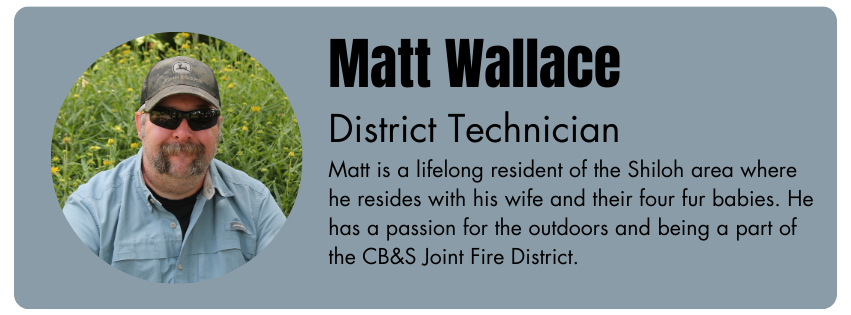
Following our 2024 “Pollution Prevention” theme for the MS4 program, composting is one of the easiest ways for the average person to keep food scraps and other organic matter out of the landfill…

The Importance of Composting
Following our 2024 “Pollution Prevention” theme for the MS4 program, composting is one of the easiest ways for the average person to keep food scraps and other organic matter out of the landfill. Nearly 1/3 of all food produced is wasted (~1.3 billion tons each year) and around $165 billion a year is spent managing that waste (data from TED Ed, link below). Composting is a sustainable practice that can coincide with organic gardening.
“Urban Composting” is a practice that can be performed in a city setting with limited space. In this article, I’ll discuss two unique and viable options to get you started: vermicomposting and using compost tumblers.
Vermicomposting
Vermicomposting uses earthworms to decompose organic matter (see Figure 1). The byproduct of vermicomposting is vermicast, a substance rich in humus, nitrogen, phosphorus, potassium, micronutrients, and beneficial soil microbes. Vermicast can help neutralize soil pH and improve plant health and nutrient uptake. Some folks refer to it as “Black Gold”. Worms can be somewhat sensitive and picky, so avoid putting spicy foods or anything acidic in your vermicompost. You don’t want to upset the balance!

Compost Tumblers
Traditional composting can be easily performed in a tumbler or similar bin at home. Again, this option does not require a ton of space, and the closed bin keeps any unpleasant smell contained. The composter needs to be turned often—and that is most of the maintenance required. Adding composted organic matter to your soil is a fantastic way to supplement it. Your plants and the planet will thank you.
Resources – Click or tap!

Highlighted upcoming events for October through January!
Highlighted upcoming events for October, November, December, and January
For our full list of upcoming events – including Board Supervisor meetings – go to our calendar by following the link at the bottom of this page!
October

Fri, Oct. 18 & Sat, Oct. 19 @ 4:00 pm – 9:00 pm
The Great Pumpkin Glow & Children’s Carnival @ Kingwood Center
Come find our booth on the first two days of this event for some Halloween fun!
Admission is required for Kingwood’s event.
November

Mon. Nov. 18 @ 7:00 am to Tue. Dec. 3 @ 6:59 am
Richland Gives: Early Giving
Richland Gives is a local online giving campaign held once a year. It encourages people to contribute to local non-profits. Thanks to previous generous donors, Richland SWCD has benefited from this campaign.
Want to donate to Richland SWCD or learn how to maximize your donation? See the links below!

Wed. Nov. 13 @ 4:00 pm – 6:00 pm
Cancelled: Stupendous Soils Open House
Join us for some soil-themed fun for the whole family! Learn about soil health, watch out for hanging undies, and eat dirt (pudding)!
The event is FREE and will be held at the Longview Center – 1495 W. Longview Ave, Mansfield. Contact us for more information.

Tue. Dec. 3 @ 7:00 am – 7:00 pm
Richland Gives: Day of Giving
Richland Gives is a local online giving campaign held once a year. It encourages people to contribute to local non-profits. Thanks to previous generous donors, Richland SWCD has benefited from this campaign.
Want to donate to Richland SWCD or learn how to maximize your donation? See the links below!
Our Full Calendar of Events
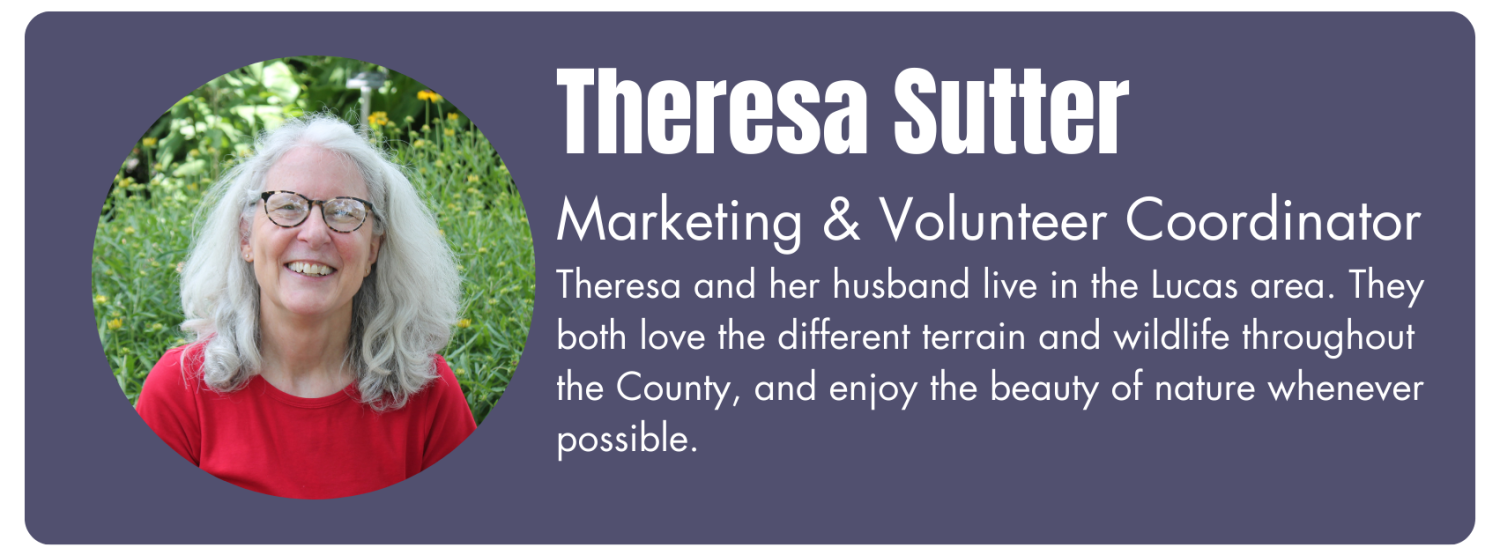
Matt has lived in the Richland County area his whole life, attending college at Ashland University and Wooster ATI, completing a degree in Environmental Resource Management in 1998…

Welcome back Matt Christian!
Matt has lived in the Richland County area his whole life, attending college at Ashland University and Wooster ATI, completing a degree in Environmental Resource Management in 1998. “I knew I wanted something to do with the environment; I always liked the outdoors, and nature.” After completing an internship with Richland Soil & Water Conservation District (Richland SWCD) in 1997 Matt began his Soil and Water Conservation career in Crawford County as a Technician. He joined Richland Soil and Water Conservation District as a Technician in 2000, staying for 17 years.
Matt began his new role as Director on May 6 and says his favorite part of the job is passing on conservation knowledge to the community “The ability to pass on the ideas and principles of what conservation means, its importance, and explaining the primary principles of conservation is what I enjoy most.”
Matt’s Goals
As the Director of Richland SWCD, Matt envisions a busy and bright future for the district. “I foresee many issues in the county are only going to become more focused and important. Agriculture is still a big part of Richland County, and development is going to continue to increase. Anytime new impervious areas are developed, water has a chance to get into the streams faster. It’s important for us to work with new (stormwater) applicants before construction begins to ensure water run-off stays on their property and is absorbed into the soil as much as possible.”
If you would like to reach out to Matt and welcome him in his new role, he is available by phone at 419-747-8684, or email him at the link below!
Matt is excited to continue the mission of assisting the citizens of Richland County in protecting and improving the County’s natural resources.

Thanks to the encouragement of our partners during our five-year strategic planning process in 2023, we at Richland Soil & Water Conservation District (Richland SWCD) saw a clear need to re-focus on agricultural outreach.

Thanks to the encouragement of our partners during our five-year strategic planning process in 2023, we at Richland Soil & Water Conservation District (Richland SWCD) saw a clear need to re-focus on agricultural outreach. In the past, our district has found it difficult to do this due to financial and staffing limitations. Now, thanks to community support, we are able to offer these services again. Most notably, support for these services was generously provided by a grant from the Richland County Foundation.
St. Mary’s Farm Field Day
We hit the ground running this summer. On May 28, as the school year drew to a close, Richland SWCD was invited to the McKown farm for St. Mary’s (Shelby) Farm Field Day. Technician Jordan Keller brought along the rainfall simulator to discuss how different land uses impact water quality.
Each of the five groups of students ages K-6 grade buried a pair of (clean) underwear for our Soil Your Undies experiment. Locations where students buried the underwear included: Woodland Edge, Turf Grass, Conventional Tilled Cropland, Pasture, and a Hay Field. The students had a blast with the Soil Your Undies experiment and a pair of underwear seemed to end up on a kid’s head in every group.






Don’t forget to stop by our booth at the fair this year to check out our county wide “Soil Your Undies” challenge! What is this? Click or tap at the bottom of this page and scroll down the the article from the last newsletter!
Grazing Field Day for Plain Growers
On June 14th Richland SWCD hosted a Field Day for Plain Growers emphasizing grazing management practices. State Grazing Specialist, Megan Burgess – United States Department of Agriculture – Natural Resources Conservation Service (USDA-NRCS), led a field day where participants enjoyed learning about pasture weeds and forage identification, grazing equipment, rotational grazing, and a pasture visit.
A HUGE thank you to the Randy and Eileen Eisenhauer for letting us use their pasture, last-minute, for demonstrations on how to use a grazing stick. Randy was more than happy to discuss the management decisions he’s made on his pasture and highlighted how Richland SWCD and USDA-NRCS have assisted with improving his operation.
If you feel like you missed out on your opportunity to learn about grazing, you’re in luck! Richland SWCD will be hosting a three-part grazing school series called Pastures for Profit Grazing School July 23rd & 25th from 6-9 pm with a pasture walk at Eisenhauer farm scheduled for July 27th from 9am-2pm. The cost is $30 for the series and includes a grazing stick and USB with course manual. Registration is requested by July 19.


Links! Click or tap below:

